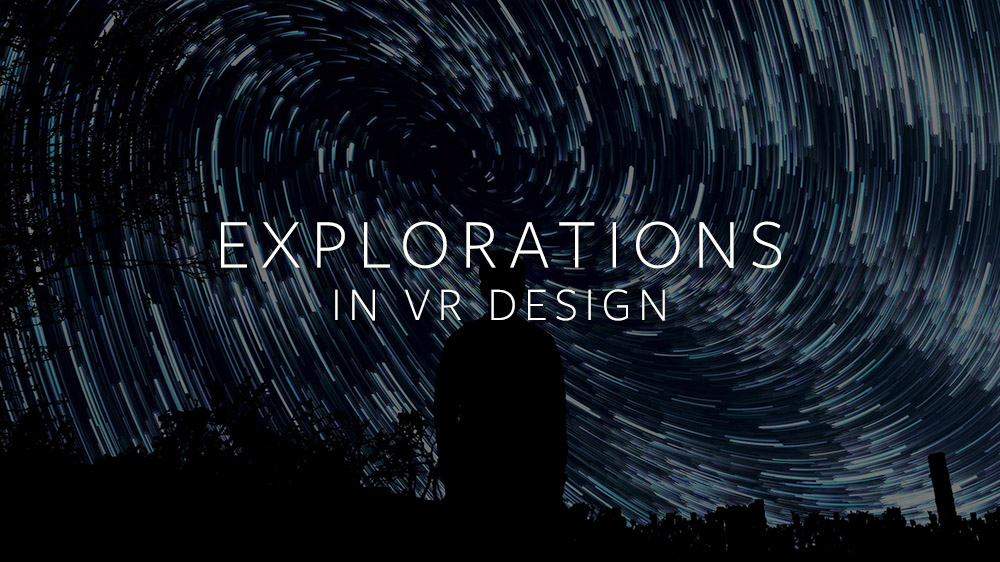Until the rise of VR, we lived on the edges of a digital universe that was trapped behind glass screens. Immensely powerful and infinitely portable, but still distant and inaccessible. Now the glass is breaking. We can see and reach into new worlds, and the digital is taking substance in our reality. You are now […]
// UX Design

Martin Schubert is a VR Developer/Designer at Leap Motion and the creator of Weightless and Geometric. In architecture school, we had many long discussions about things most non-designers probably never give much thought to. These always swung quickly between absurdly abstract and philosophically important, and I could never be sure which of the two was […]
With the 3D Jam just around the corner, we thought we’d give you a headstart – with a full guide to the very latest resources to bring your to life. In this post, we’ll cover everything you need to know about our integrations and best practices for augmented and virtual reality, desktop, and the Internet of Things. A […]
As the 3D Jam approaches, developers around the globe are already getting a headstart on their projects. Zach Kinstner, the creator behind Hovercast and Firework Factory, has been sharing his latest project through a series of videos – a virtual reality guitar! We caught up with Zach this week to talk about his design process, especially the guitar’s unique combination of visual depth cues.
Boom! The white globe in front of you explodes into an array of color and light. A fraction of a second later – whoosh! – glowing stars streak past your head, leaving you in their colorful wake.
Reaching toward the holographic interface, with the motion of a single finger, you take control of time itself. The firework slows. Stops. Then it begins to recede back to the center. You slow time again as the stars ease past you, watching as the firework surrounds you. Entropy turns on its head again, and the firework calmly implodes into a single white globe.
But how would this firework look in orange and yellow? Exploding in a spiral pattern? You casually switch between holographic menu panels to make some changes. You’re about to find out.
From building 3D scenes to designing object interactions, distance is an essential part of VR design that has to balance hardware needs and user instincts.
Hand tracking and virtual reality are both emerging technologies, and combining the two into a fluid and seamless experience can be a real challenge. This month, we’re exploring the bleeding edge of VR design with a closer look at our VR Best Practices Guidelines.
Jody Medich is a UX designer and researcher who believes that the next giant leap in technology involves devices and interfaces that can “speak human.” In this essay, she asks how a 3D user interface could transform how we explore and understand content – by giving our brains a whole new dimension of working memory.
In yesterday’s post, I talked about the need for 3D design tools for VR that can match the power of our imaginations. After being inspired by street artists like Sergio Odeith, I made sketches and notes outlining the functionality I wanted. From there I researched the space, hoping that someone had created and released exactly what I was looking for. Unfortunately I didn’t find it; either the output was not compatible with DK2, the system was extremely limited, the input relied on a device I didn’t own, or it was extremely expensive.
What if you could create art outside the boundaries of physics, but still within the real world? For artists like Sergio Odeith, this means playing tricks with perspective. Sergio makes stunning anamorphic (3D-perspective-based) art using spray paint, a surface with a right angle, and his imagination.
Creative 3D thinkers like Odeith should have the ability to use their freehand art skills to craft beautiful volumetric pieces. Not just illusions on the corners of walls, but three-dimensional works that that people can share the same space with. This was what inspired me to create Graffiti 3D – a VR demo that I entered into the Leap Motion 3D Jam. It’s available free for Windows, Mac, and Linux on my itch.io site.

